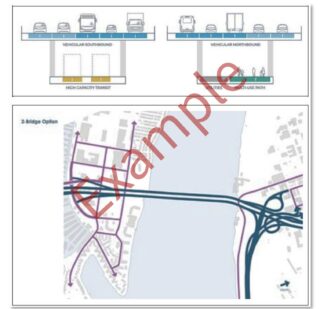
“High speed rail as a transit component to the Interstate Bridge was dismissed during the screening process because it neither increased vehicular capacity nor decreased vehicular demand…”
— IBR Program memo
The second attempt to replace and expand I-5 between Washington and Oregon is steaming ahead, on track to have a full project designed by early 2022. The Executive Steering Group for the “Interstate Bridge Replacement program”, catching up from a month off, met Wednesday night and spent time discussing what the project will not be.
In conjunction with a memo produced by the project team, the group went through a list of options that had been given “one last look”, as Metro President Lynn Peterson characterized it, but were officially being discarded. On the list was an immersed tube tunnel, the “Common Sense Alternative II”, and the idea of including high speed rail on the new bridge.
High speed rail between Vancouver, B.C. and Portland is currently being studied by the State of Washington, and integration with this project could be a significant step forward, but the project team has ruled it out. “In the future, high speed rail has the potential to be a climate friendly way to connect the major cities on the West Coast to each other,” the memo states. “However, high speed rail as a transit component to the Interstate Bridge was dismissed during the screening process because it neither increased vehicular capacity nor decreased vehicular demand, and it did not improve transit performance in the I-5 bridge corridor.”
It’s not surprising to see these options discarded, though, since the official purpose and need for the IBR program is exactly the same as the failed Columbia River Crossing, without the addition of climate change impacts and equity considerations that were explicitly rejected earlier this year.
Advertisement
Moving forward, Program Administrator Greg Johnson made clear that four questions are taking center stage right now: how many lanes the highway will have, will the bridge carry light rail or bus rapid transit, will there be a direct interchange on Hayden Island, and will the North Portland Harbor Bridge be retrofitted (as proposed in the CRC) or fully replaced. This winter, alternatives will be presented for all of those questions. The current plan is to present a full project to the joint committee of the state legislatures by March, meaning this winter could be the most critical time to pay attention to the project.
Without a fundamentally different approach all signs are indicating we’ll arrive right back at the Columbia River Crossing’s design.
So far, the group hasn’t looked at any design options in detail, but they were shown a slide that included an “example bridge alignment” (above) that looks almost identical to the preferred alternative from the Columbia River Crossing, with ten marked lanes on top of two bridges.
Several ESG members noted the absence of a road pricing structure among the four primary questions. But that issue could, and almost certainly should, influence the project’s design. A 2013 report showed a tolled I-5 crossing would produce traffic levels in 2036 lower than even 2012 levels. Tolling I-205, which models suggest would see a massive increase in traffic with a tolled I-5, might change the dynamics. If the goal is to severely reduce climate impacts, as several ESG members have stated at past meetings, then a design that reduces traffic volumes should be at the center.
Commissioner Jo Ann Hardesty wasn’t present for most of the meeting, with PBOT Director Chris Warner filling in for her. Hardesty has been more adamant about a comprehensive pricing strategy than anyone else on the Executive Steering Group and her voice was missing from the discussion. But Lynn Peterson told the group she wanted it to be “very clear” on behalf of Metro Council that “from our perspective we don’t see congestion pricing as a financial, final step…it is an input into transportation demand management and GHG emission reduction.”
But Greg Johnson described the issue of tolling as being on a second tier below the issue of what the bridge looks like. He also described “more equity, more climate” as being on that second tier. But he did say that the project is coordinating with ODOT’s work on studying congestion pricing further south on I-5 and I-205. Peterson suggested additional work needs to happen: “I think this needs to be hand in glove, not two separate things…[it] can’t be two separate projects where we trust that ODOT is going to do one thing later,” she said.
How congestion pricing influences the design of the project will be more clear by November and December, but without a fundamentally different approach all signs are indicating we’ll arrive right back at the Columbia River Crossing’s design.
— Ryan Packer, @typewriteralley on Twitter
— Get our headlines delivered to your inbox.
— Support this independent community media outlet with a one-time contribution or monthly subscription.



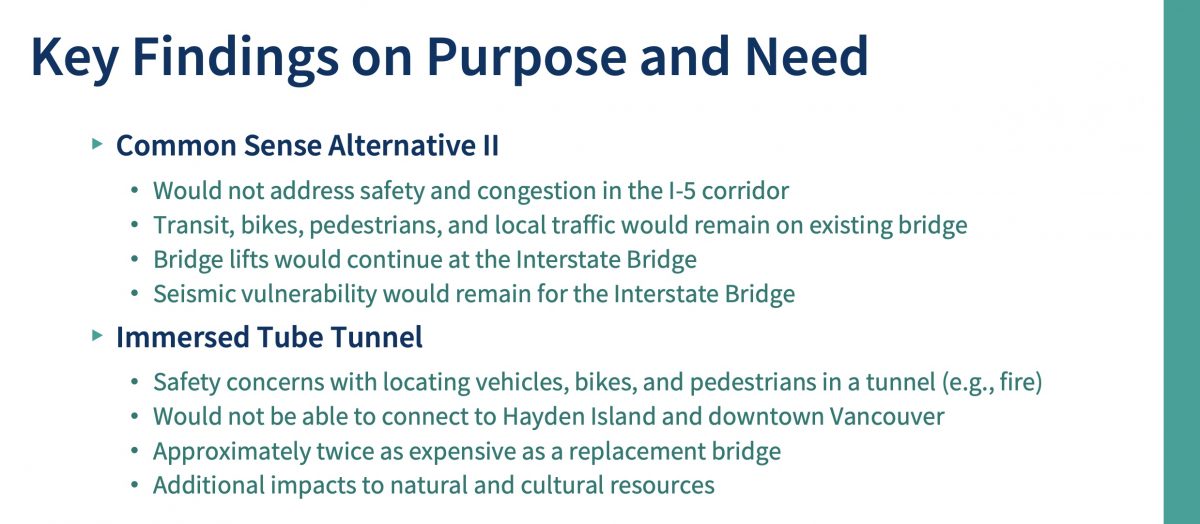
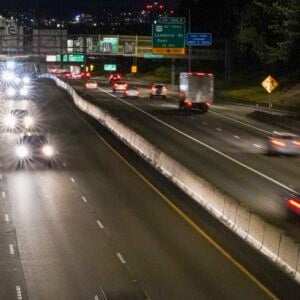

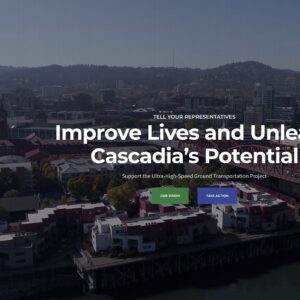
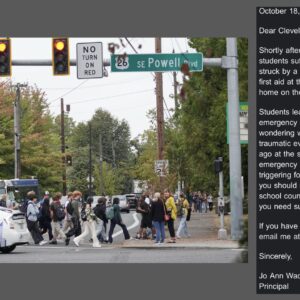
Thanks for reading.
BikePortland has served this community with independent community journalism since 2005. We rely on subscriptions from readers like you to survive. Your financial support is vital in keeping this valuable resource alive and well.
Please subscribe today to strengthen and expand our work.
It isn’t possible for the IBRP to take “one last look” at the Common Sense Alternative II, since they never took a first look at it. Staff presented an error-filled memo full of opinion, but lacking in facts. For a more recent update of the “Common Sense Alternative II” look at this video linked from the AORTA web site.
This proposal fully meets the “Purpose and Need” statement adopted by the IBRP, and is a significant improvement from one of the failed “Columbia River Crossing” (CRC) alternatives that also met the “Purpose and Need” of the old CRC, according to the findings of that project, which is the same as the current “Purpose and Need” statement.
The simple fact is that ODOT and WSDOT are so hungry for federal money that they are willing to cut corners and reject alternatives that are better and cheaper than what they designed the last time. Their memo criticizing the Common Sense Alternative II is cribbed from their old CRC documentation explaining why they rejected their own poorly designed supplemental bridge that still met the “Purpose and Need” according to their own analysis.
Look for an extensive rebuttal memo from AORTA in the next few days. (Note that IBRP wrote their memo trashing the Common Sense Alternative II back in August, but failed to send a copy to AORTA.)
Here is the rebuttal memo: https://www.aortarail.org/site/assets/files/1044/rebuttal_of_csa-ii_dismissal.pdf
Throwing out the Common Sense Alternative just shows everyone the fix was in from the beginning. What’s the point of this “process” if they’re just going to resurrect the over-priced, over-built mega-project that collapsed under its own weight the last time around?
Who wants to bet that after several more years and tens of millions of more dollars, these people re-propose Columbia River Crossing exactly as it was but with some “equity” sprinkled on top?
I’d love to know how they determined that adding high speed rail wont decrease vehicular demand. Surely this is a mistake at best, and an effort to ignore fact at worst.
Think about it for a minute. To have effective high-speed rail, the stops have to be located many miles apart otherwise you can’t achieve high speeds. Where would you expect to have stops? Seattle, Olympia, Portland, Salem, Eugene probably, but would you even have a stop in Vancouver or Chehalis? Would the extra stops reduce speeds too much thus increasing the travel time for longer trips? The station dwell time, time lost from deceleration, and time lost for acceleration all factor into reduced speed and increased travel time for longer trips.
Even if you had stops in downtown Vancouver and Union Station in downtown Portland, would you want to use up all the passenger capacity for that short segment, thus preventing passengers from travelling from Seattle to San Francisco or Olympia to Eugene?
Besides that how many high-speed trains would you expect in a day? Would you establish the timing of the entire corridor to give preference to peak commuter hours between Portland and Vancouver? And just how many people would be within convenient distance of the two stations for both their trip origin and destination?
You’re right. The only efficient use of light rail on the West Coast is stops at Los Angeles, Oakland, Eugene, Portland, Seattle, Vancouver B.C. all in one day.
You’re wrong. You are only talking about long-distance standard rail like TGV or ICE. Many US & Canadian cities have a new short-range high-speed 3rd rail systems called “subway” that are high-speed for just a few blocks and up to a mile between stations, all-electric. It’s new technology introduced as recently as 1863 in London, so you may have missed it. Think of Vancouver’s Sky Train or BART for regional examples, both of which actively reduce the need for SOV trips.
With the new Swiss tunnels under the Alps, current tunnel technology allows for both the long-distance high-speed 200+ mph rail and for local subway service on multiple decks, under rivers, through mountains, even under cities. All without those silly bridges.
David, Since your definition of high-speed rail includes subways, you should have been an enthusiastic backer of the prior version of CRC since it included the extension of TriMet’s MAX to Vancouver. Seriously, does anyone else think BART and Sky Train meet the definition of high-speed rail? I haven’t found that term used in the descriptions of BART or Sky Train.
“Rapid transit” and “high speed rail” are different things.
“Rapid transit” generally refers to local or regional transit systems that use exclusive right-of-way and have relatively few stops per mile, like BART or the New York Subway. They aren’t necessarily very “fast”, with average speeds that may be in the 20-30 mph range or even slower, but are “rapid” when compared to city buses or gridlocked traffic.
“High-speed rail” describes an intercity rail system with top speeds of 125 mph of greater, typically linking the cores of larger cities. Examples would be the bullet trains in Japan, or Amtrak’s Acela Express.
Because most of the congestion is from SOV commuters from SW Washington. High-speed rail would reduce demand on I-5 between PDX and SEA, and some points in between, but it wouldn’t affect any of the daily commuters.
Clark County and its surrounding communities would be hard to serve with commuter rail running on the same tracks. There are connection issues on both ends, and a lack of clear corridors to run heavy rail on the north side of the river. Where the rail corridors do run today, the residential density is very low.
Only true at non peak times.
I don’t know what percentage of people who work in Hillsboro / Beaverton live in Vancouver, but I know there is a lot. I used to work out near the Hilsboro air port and every night 26 would be chock o block. And this backup would overflow to surface roads down town and onto the highways.
Further, there are a lot of people who work in PDX downtown but live north of the river.
I think you’re marginalizing a significant statistic.
The last time around the bridge design was limited by the approach path to Pearson Field. Given that I’m surprised that they dispense with the tunnel option so quickly.
I have this feeling that 20 years from now ODOT and civic leaders will still be debating the design of the Columbia River Crossing. By then the existing bridges will have crumbled in to disrepair and only be suitable for vehicles no heavier than a donkey cart or a cargo bike.
Fortunately, ODOT has been continuing to maintain the existing bridges, which are structurally sound with the exception of a massive earthquake happening.